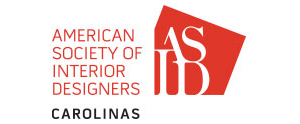Sustainable Design FAQ
What are sustainable design’s key issues and common misconceptions?
It is more expensive than other types of design (not necessarily); there are not enough materials to work with (there are plenty, and new ones are launched every week); nobody is interested in green (from people concerned about the environment, to families with sick children, to business worried about lawsuits, more and more potential customers are inquiring about, and requesting, sustainable design).
What makes a project or a building green?
A sustainable approach to design should create buildings and interiors that 1) are healthier for people and enhance productivity; 2) can be built at market rate and cost much less to operate; 3) use less fossil fuels thus conserving energy, generating less global pollution and saving on operational costs by requiring less maintenance; 4) use less water; 5) manage waste at the highest productive level; reduce impacts on both developed and undeveloped land; 7) minimize the use of materials and use materials with the lowest environmental impacts.
Why become a green designer?
The number of sustainable design projects continues its fast increase, due in part to the phenomenal growth of the U.S. Green Building Council (USGBC) a body comprised of architectural and engineering firms, design firms, contractors and developers; federal, state, and local government agencies; and professional associations like ASID, AIA, ASLA and IIDA. Today’s designers find themselves with a significant professional opportunity: to specify and build healthy buildings and interiors using environmentally friendly products and materials that have a healthy impact on clients and the planet.
How can my company become a green design firm?
Turning Green was developed to assist interiors designers who want to integrate sustainable design principles into their firms’ business principles and practices. It encapsulates the knowledge and insights of the 13 designers and team members at Associates III, a residential and hospitality interior design firm in Denver, Colorado, who decided about five years ago that sustainability needed to be not just a part of their design practice but a guiding philosophy underlying their approach to every design project they undertook.
For residential applications, check out the REGREEN Guidelines created through a partnership between ASID and the U.S. Green Building Council. These compilation of best practices, organized by project type, was released in March 2008 and represents the nation’s first comprehensive green residential remodeling guidelines.
What is LEED and why should I know about it?
As with any design specialty, green design needed its own standards. LEED (Leadership in Energy and Environmental Design) is a voluntary, consensus-based collection of national standards for developing high-performance, sustainable buildings and interiors. It has become increasingly recognized by professional designers as a complete framework for assessing building performance and meeting sustainability goals. Developed by USGBC, there are currently four available LEED standards: LEED-NC (version 2.1) for new construction and major renovation projects; LEED-EB (pilot version) for existing building operations and maintenance; LEED-CI (pilot version) for commercial interiors projects; and LEED-CS (pilot version) for core and shell projects. LEED for Homes is expected to become available for pilot projects in late 2004. USGBC also offers a comprehensive system of professional accreditation, training and practical resources.



